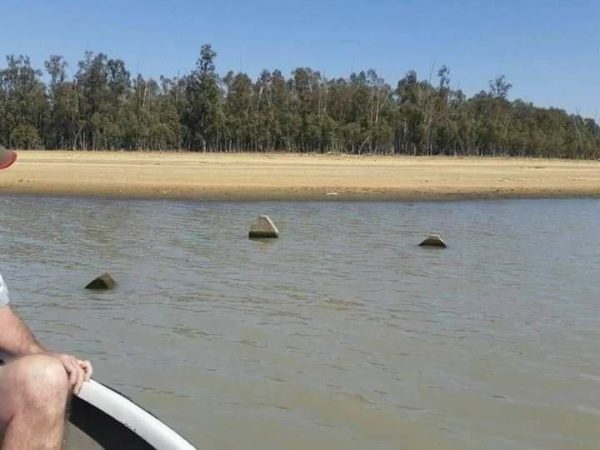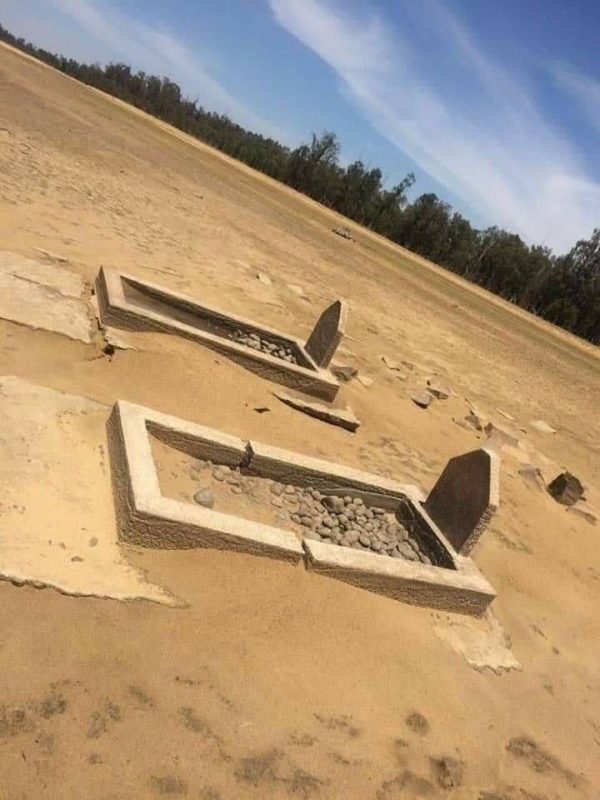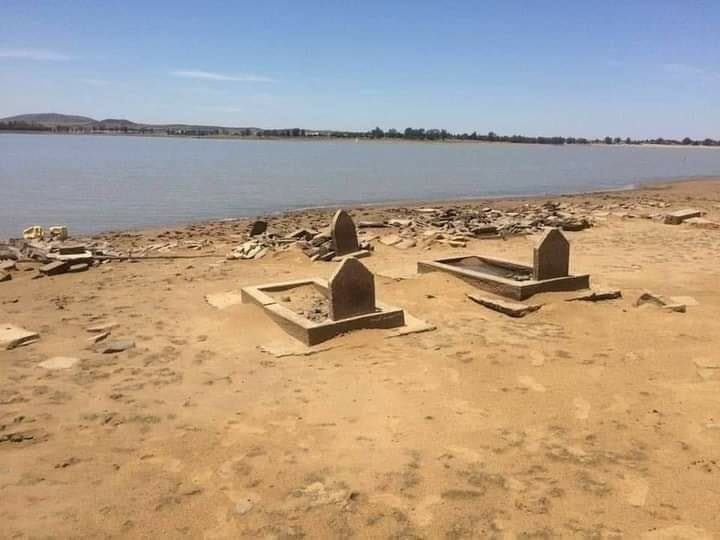The Vaal Dam, which is South Africa’s second-largest dam, was completed in 1938. It touches three provinces, and these include the Free State, Gauteng and Mpumalanga. Recently, a number of photographs have been circulating social media and these show what appears to be a number of gravestones peeking from beneath the dam’s water and later, being completely exposed.
According to Africa Check, several Facebook posts making the claim that a portion of the dam was built on top of a cemetery have been flagged by Facebook as “false”.
“Graves exist, occasionally visible,” the fake news watchdog said. “The online branch of the Geological Society of South Africa, or eGSSA, keeps records of grave sites around the country, including those in the photos shared on Facebook. GPS coordinates on the eGSSA website indicate that the graves are located on a roughly three-kilometre-long island in the Vaal Dam. They are occasionally visible when the water level is low, like in this 2005 photo.”

Photos collected by the eGSSA show that the graves include those of Jacobus Johannes Meyer, who lived between 1861 and 1893. The only other surviving grave is that of Jacobus Frederik Janse van Vuuren, who died in 1928, ten years before the dam was first completed.
“However, the original dam wall was 9.15 metres shorter than it is today. The dam wall was raised in the 1950s and again in the 1980s and the dam’s capacity more than doubled,” the organisation continued. “So was the dam ‘built on a cemetery’ or were the graves only submerged when the dam wall was raised? Dams regularly submerge human settlements. Many Facebook users reacted to the posts of the graves with shock and concern. But while often controversial, it is not unusual for dams to flood occupied or previously occupied land.”
According to Africa Check, an estimated 80-million people worldwide have been displaced by large dams. This information was provided by the Internal Displacement Monitoring Centre, part of the Norwegian Refugee Council but based in Geneva, Switzerland.
“We were unable to locate the exact position and elevation of the graves, or to determine exactly when the photos were taken, which makes it difficult to determine when the graves were submerged,” AfricaCheck said. “Some of the flagged Facebook posts suggest that the photos ‘were taken in 2016 when the water level was extremely low’. But other posts imply the photos are more recent.
“The dam was at only 26.3% capacity on November 6, 2016, just two days after the timestamp on most of the eGSSA photos. Photos posted on Facebook in early November 2020 would have been taken when the dam was at around 30% capacity.”
“The original operating capacity of the dam was roughly 38% of its 2020 full supply capacity. So it is possible that the waters of the original dam would have covered the graves,” it concluded. “We can be sure that the graves pictured in the Facebook post are submerged beneath the Vaal Dam, and they have been revealed by low water levels many times.”
Picture: Strand Patrol/Facebook








